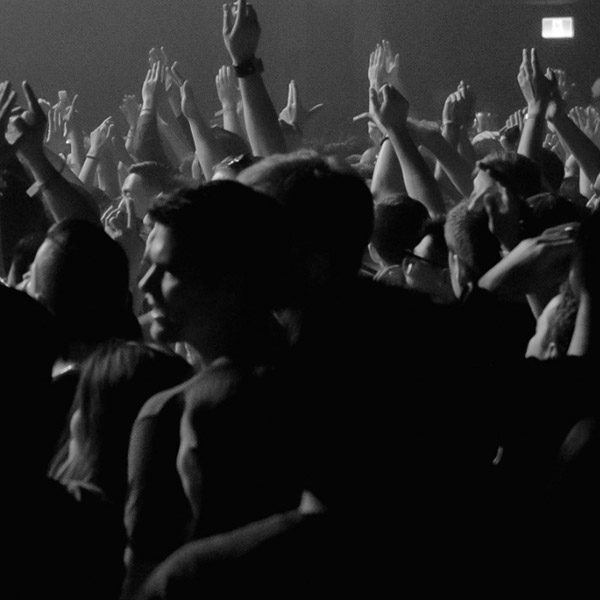Thurston Moore Reflects on a Career of Experimental Music, Likelihood of a Sonic Youth Reunion
Over his 45-year career, Thurston Moore has always comfortably had his feet in two worlds: the song-centric music of Sonic Youth, the pioneering noise rock band he co-founded in 1980, and the experimental world born from his upbringing in New York’s No Wave scene in the late ’70s and early ‘80s.
“I really give equal value to composition … that I would give to improvisation,” Moore tells Billboard’s Behind the Setlist podcast from his home in London. “I mean, they really inform each other.”
Moore’s latest album, Flow Critical Lucidity, released in 2024, often splits the difference between keeping to traditional song structure and tossing the rulebook out the window. Moore was joined in the studio by musicians who have performed on his song-based solo efforts: Deb Googe, the bass player for My Bloody Valentine; drummer Jem Doulton and guitarist James Sedwards. Googe and Sedwards also appear on Moore’s 2020 album, By the Fire, 2017’s Rock N Roll Consciousness and 2014’s The Best Day — albums that harken back to Sonic Youth’s more accessible work and Moore’s 1995 solo debut, Psychic Hearts.
But much of his work captures his love of experimental music that took root in the New York music scene in the late ‘70s and early ‘80s. Spirit Counsel, released in 2019, has three expansive tracks that run a total of 2.5 hours. The free-flowing Screen Time, released in 2021, was fittingly released on Southern Lord Records, the home of drone metal band Sunn O))).
This month, Moore premiered Guitar Explorations of Cloud Formations at the New Music Dublin festival in Dublin. He was joined by Googe, Doulton and guitarist Jennifer Chochinov, one half of the London-based duo Schande. A suite in nine pieces, Cloud Formations is “very lengthy, repetitive, immersive guitar, sort of drone pieces,” says Moore, “because I wanted to have that kind of elemental nature to them as opposed to being more song-centric.”
Recording and performing a variety of music creates some uncertainty, though, among promoters, retailers and fans. So, Moore is careful to draw bright lines between his different styles to eliminate confusion. Before his recent shows in New York City and Philadelphia, he asked the promoters to make clear that fans would see an experimental trio featuring percussionists Willie Winant and Tom Surgal, not the band that recorded Critical Flow Lucidity. When he performs songs from Critical Flow Lucidity, he wants fans to know they’re not going to see free-form guitar improvisation. And although he could release a torrent of music, Moore is careful to flood the market.
“I realize that there’s a bit of a responsibility,” he says. “I mean, I know people who I associate with who are musicians who release music every week on Bandcamp, and they’re just constantly recording, releasing. And in some ways, I hold myself back from doing that. I mean, I have gotten into this situation through the years where I want to do a tour and the promoters are like, ‘Well, you were just here playing noise improv in some basement in Paris. So we don’t feel like we can actually book you right now, because the audience is confused.’ Like, what are you going to do? And so that has been a bit of an issue. It’s like, are you going to do your band? Are you going to be playing proper quote-unquote songs, which there’s much a bigger audience for? Or are you going to come here and play with some electronic noise guy? And so I understand that. It’s difficult for the other people involved who are presenting your gig, particularly promoters, because they don’t know how to promote it, and so I’m a bit careful.”
His desire to push boundaries — and his seemingly never-ending supply of friendships with influential musicians — finds Moore collaborating with some prominent names. Last year, for example, Moore performed a free improvisation set with former Led Zeppelin bass player John Paul Jones at the Big Ears Festival in Knoxville, Tenn., and later in London (joined by drummer Steve Noble at one gig). The Big Ears performance was “extremely polarizing” for anybody who expected to hear a cross between Led Zeppelin and Sonic Youth.
“It was just pretty jarring. It was like creating this kind of sound world of improvised noise music. And the place was just jammed. Everybody wanted to see this. And then I think within 30 minutes, it was half full, and I think maybe people got the idea that we weren’t going to be playing any tunes. We were just into this other thing, which we really wanted to do. And we did it, and I really loved it. I have actually mixed down the session. I’d love to put it out some day.”
Three musicians Moore is unlikely to perform with are his Sonic Youth bandmates: Kim Gordon, Lee Renaldo and Steve Shelley. From Oasis to Pavement, many rock bands from the ‘90s have capitalized on nostalgia and the longevity of their brands by returning to the stage. While Moore doesn’t exactly rule out a Sonic Youth reunion, he says isn’t motivated by the payday and believes the band’s legacy stands firm without one. “We covered so much territory that I don’t feel like it was a story left on untold. I think it really had a nice trajectory, and it certainly doesn’t feel unfinished to me.”
Listen to the entire interview with Thurston Moore in the embedded Spotify player below, or go to Spotify, Apple Podcasts, iHeart, Amazon Music, Podbean or Everand.
Glenn Peoples
Billboard






